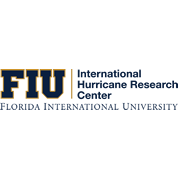CLEARWATER, FL & PLEASANTON, CA — While much of Florida is still recovering from the catastrophic damage caused by Hurricane Irma, many Sunshine State residents and businesses have found there’s a way to bounce back from a storm faster than ever before. When a hurricane hits and there are immediate costs, homeowners and commercial insurance usually don’t offer a quick fix — that’s where StormPeace comes in.
Unpredicted expenses such as debris removal, business interruption, spoiled food replacement, and evacuation costs rapidly add up and aren’t covered by the average homeowners and commercial insurance policy. StormPeace is parametric insurance offered by Assured Risk Cover that automatically pays eligible policyholders based on the strength of the hurricane and distance of the hurricane track at its closest point from their property. Policyholders can use the funds for virtually any hurricane-related costs.
“Our company paid 100 percent of eligible claims for Hurricane Irma, most within 24 hours of attestation,” said Alok Jha, CEO and founder of Assured Risk Cover. “With experts predicting active storm seasons to be the new normal, it’s crucial that residents are aware of products that will better help them recover from what is an inevitable event in the state of Florida.”
StormPeace recently partnered with the FAIR Foundation and the National Hurricane Survival Initiative to produce the 30-minute TV special, Get Ready, Florida! Through this sponsorship, the company was able to educate Floridians on how preparing early for the unexpected is necessary particularly in a state with 1,300 miles of coastline.
“Because of StormPeace, I can enter hurricane season with greater peace of mind,” said Jay Neal, CEO of the Florida Association for Insurance Reform. “Renewing my policy is now a part of my pre-season preparation — it’s comforting to know that many unplanned storm costs will be immediately covered.”
###
ABOUT ASSURED RISK COVER
Assured Risk Cover (ARC) is a venture-backed Silicon Valley corporation based in Pleasanton, California. ARC is founded by an experienced team of catastrophe risk professionals whose singular vision is to bring immediate financial relief to people globally following catastrophes. Alok Jha (CEO), Kanwal Rekhi (lead investor from Inventus Capital Partners) and Kevin Schrage (former President of Aon Smalln Commercial Lines) form the Board of Directors of ARC. StormPeace is backed by highly rated insurance and reinsurance companies—ranked A- and A+ by A.M. Best, respectively. For more information, visit www.stormpeace.com and www.assuredriskcover.com.





